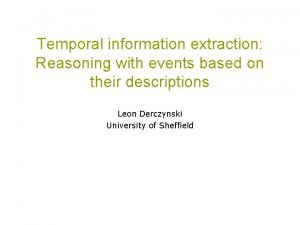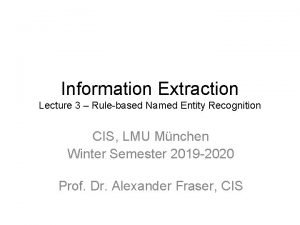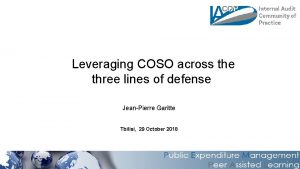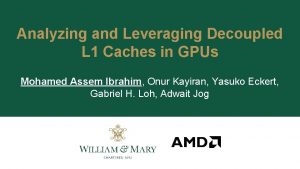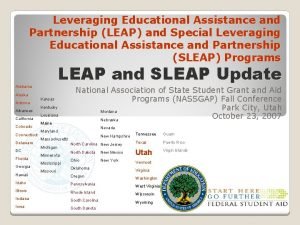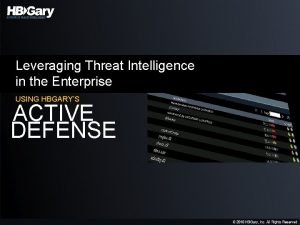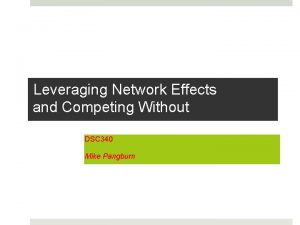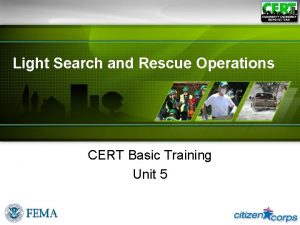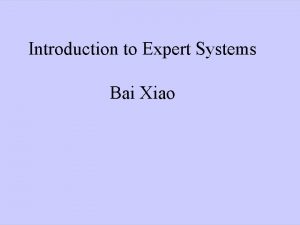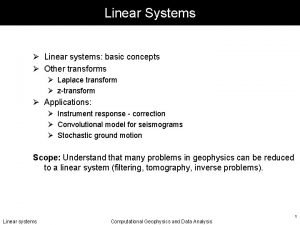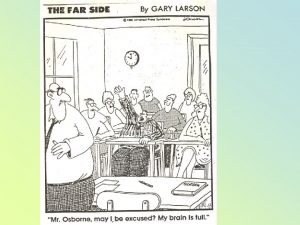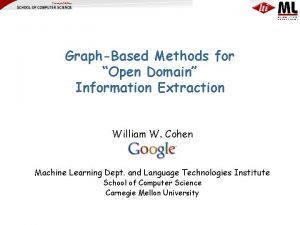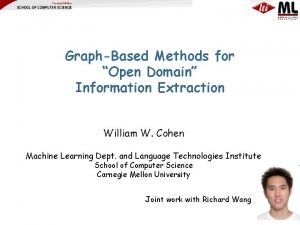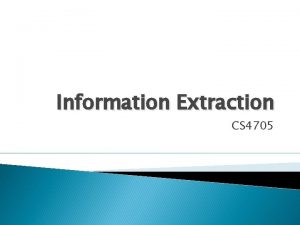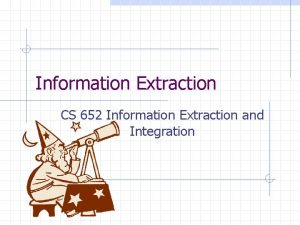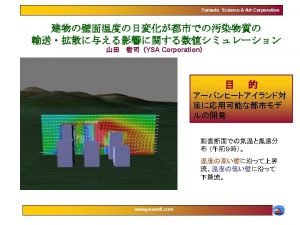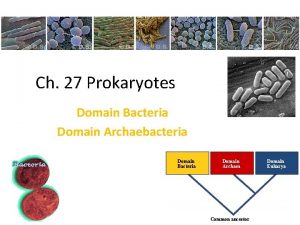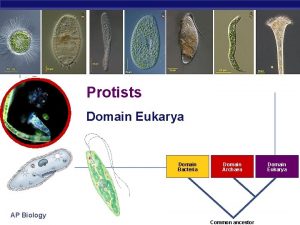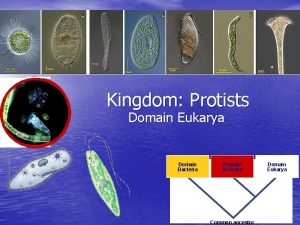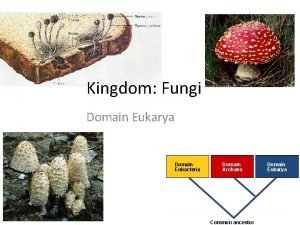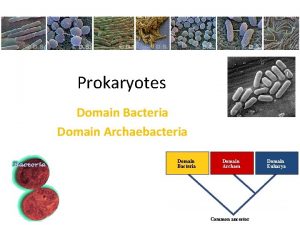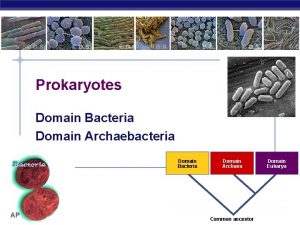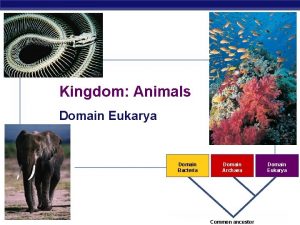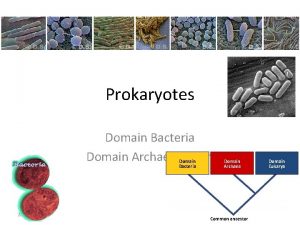Leveraging Linguistic Structure For Open Domain Information Extraction



























- Slides: 27

Leveraging Linguistic Structure For Open Domain Information Extraction Gabor Angeli, Melvin Johnson Premkumar, Christopher D. Manning ACL 2015 Sandeep Dcunha (sdcunha@seas. upenn. edu) 3/20/2019

Problem & Motivation • Open Information Extraction (IE) has many applications: – Question answering – Relation extraction – Information retrieval • Traditionally search collection of patterns over surface form or dependency tree of sentence 2

Information Extraction 3

Problem & Motivation • Classifier to split sentences into shorter utterances • Natural logic to maximally shorten these utterances while maintaining necessary context • Use set of 14 hand-crafted patterns to segment utterance into IE triple 4

Contents: • Problem and Motivation • Previous Approaches • Contributions of Work – – – Extracting self-contained clauses Dataset generation Training Inference Deletions Open IE triples and mapping to schema • Analysis • Conclusion 5

Previous Approaches: Open IE • Wikipedia-based Open Extraction (WOE) system (Wu and Weld, 2010) • Ollie uses fast dependency parsers to learn dependency patterns (Mausam et al. , 2012) • Easily constructed mapping from Open IE relations to KBP relations (Soderland et al. 2013) • 6

Previous Work: Open IE Triples Uses • Open IE’s concise extractions facilitate efficient symbolic methods for entailment – Learning entailment graphs for triples (Berant et al. , 2011) • Structured Relations (e. g. table data) – Matrix factorization for unifying open IE and structured relations (Yao et al. , 2012; Riedel et al. , 2013) 7

Contributions • Uses classifier to extract self-contained clauses • Uses natural logic to find maximally compact sentences from extracted clauses • Uses small pattern set for IE due to simplified clauses 8

Overview of Approach 9

Extract Self-contained Clauses • 10

Action Space • Performed on Dependency Edge • Yield: Yields new clause on dependency arc – In sentence Dentists suggest you should brush your teeth, – arc : You should brush your teeth • Recurse: Recurse on dependency arc but don’t yield it. – Faeries are dancing in the field where I lost my bike: recurse on the field where I lost my bike to get to I lost my bike • Stop: Don’t recurse on arc as the subtree under arc is not entailed by parent sentence – Furry cats are cute does not entail furry 11

Searching • Search path is a sequence of Yield and Recurse terminating in Stop – yields clause rooted at C – yields two clauses with roots at B and C. • Finding all such sequences is exponential in size of tree – Training: collect first 10, 000 sequences – Inference: uniform cost search until classifier predictions fall below threshold 12

Capturing Controller • For Yield and Recurse one commonly wants to capture a controller from the higher clause • Subject Controller: If arc is not subject arc, add subject of parent node as subject – Born in a small town, she took the midnight train. • Object Controller: If arc is not object arc, add object of parent node as object – I persuaded Fred to leave the room. • Parent Subject: If arc is only outgoing arc from a node, take parent node as (passive) subject – Obama, our 44 th president becomes Obama [is] our 44 th president. 13

Dataset • Dataset with each sentence containing 1 or more known relations • Annotation is used for distant supervision of actions to take: if sequences recovers known relation, it is correct • Positive sequence: sequence of actions leading to correct extraction of known relation – E. g. if it is known Obama was born in Hawaii, an action sequence which produces (Obama, born in, Hawaii) is positive • Negative sequence: Sequence of actions which results in a clause which produces no relations • Incomplete negatives problem: knowledge base is not exhaustive so validity of other sequences is unknown. These are discarded 14

Action Classifier • Input – Recurse: All but last actions in positive sequences – Yield: Last action in each positive sequence 1 – Stop: Last action in each negative sequence • Output – Positive or negative sequence 1. Paper says Split but from context is probably Yield 15

Training • Multinomial logistic regression classifier • Recurse class is given 3 x weight – precision errors harmless for accuracy – recall errors are directly harmful to recall 16

Inference • Search problem: Beginning at root of tree, consider every outgoing edge • For each possible action on parent use classifier to determine: 1. Split edge off and recurse on child (Yield and Recurse) 2. Don’t split edge of and recurse on child (Recurse) 3. Don’t recurse (Stop) • Score of clause is product of action scores taken to reach clause (from classifier) 17

Natural Logic for Deletions • Operators (e. g. all, no, many) have polarity: – Downward polarity: if all rabbits eat vegetables then all cute rabbits eat vegetables – Upward polarity: if some cute rabbits are small then some rabbits are small. – Operator-less items have upwards polarity • Dependency arcs are classified into whether deleting the dependent of the arc makes the governing constituent more general, specific, or neither – More general: becomes rabbit – Neither: becomes runs which is unentailed – More specific (rare): becomes 200 18

Deletions • Deletions can be automated with high accuracy in most cases • Non-subsective adjectives: a fake gun is not a gun – List of non-subsective adjectives are preserved (Nayak et al. 2014) • Non-meaningful entailment: – Alice went to the playground Bob entails Alice went to the playground but Alice is friends Bob entails Alice is friends. – Alice played baseball on Sunday entails Alice played on Sunday but Obama signed the bill on Sunday entails Obama signed on Sunday. 19

Deletions (cont. ) • 20

Segmenting into open IE triples Clause splitting Noun Phrase Splitting 21

Open. IE to Known Relation Schema 22

Analysis • TAC KBP Slot Filling – Given: Large unlabeled corpus of text, fixed schema of relations, and set of query entities – Objective: Find all relation triples with query entity as a subject and matching one of the defined relations – Intuitively: Populating Wikipedia Infoboxes from a large unstructured corpus of text. • System compared to: – University of Washington system which used Open. IE 4. 0 run over KBP corpus. Open. IE 4. 0 utilizes semantic roles in addition to traditional open IE techniques. (Soderland et al. , 2013) – Ollie run in an identical framework to this system. Since Ollie does not extract nominal relations, this system’s nominal relation extraction was added to Ollie. 23

Results • Much better F 1 score than University of Washington • Precision is worse: more irrelevant relations • Recall is better: more correct relations were found 24

Results: PR Curve • • Compare system to Ollie Plotted using confidence of extraction – If extraction found multiple times, confidence is sum of extractions’ confidences • Low early precision – Theory: systematic errors in clause splitter • Relatively smooth at tail – Learning a reasonable estimate of confidence for extractions that have only one supporting instance in the text (46%) 25

Conclusion and Thoughts • Software and code was released under the name Stanford Open. IE • Angeli et. al. built an Open IE system which transformed complex text into simple clauses before performing extraction • State of the art recall value is low (18. 6): missing many extractions 26

Future Work • Test system on producing triples for other tasks (e. g. entailment) • Enhance clause-splitter: The authors speculate that the reason for the low start at the beginning of the PR curve is due to bad splits. • Precision could be improved to state of the art: perhaps extra filtering step 27
 영국 beis
영국 beis Temporal information extraction
Temporal information extraction Ner relation extraction
Ner relation extraction Information extraction algorithms
Information extraction algorithms Leveraging subsidiary skills
Leveraging subsidiary skills Line extension vs brand extension
Line extension vs brand extension Leveraging social media for talent acquisition
Leveraging social media for talent acquisition Secondary brand knolledge
Secondary brand knolledge Secondary brand associations
Secondary brand associations Sources of secondary brand associations
Sources of secondary brand associations Coso 3 lines of defense
Coso 3 lines of defense Coso three lines of defense
Coso three lines of defense Analyzing and leveraging decoupled l1 caches in gpus
Analyzing and leveraging decoupled l1 caches in gpus Louisiana leveraging educational assistance partnership
Louisiana leveraging educational assistance partnership Leveraging threat intelligence
Leveraging threat intelligence Leveraging network effects
Leveraging network effects The strategy of international business chapter 13
The strategy of international business chapter 13 Light search and rescue
Light search and rescue Domain codomain range
Domain codomain range Z domain to frequency domain
Z domain to frequency domain Data domain fundamentals
Data domain fundamentals Time reversal property of z transform
Time reversal property of z transform Z transform integrator
Z transform integrator Domain specific vs domain general
Domain specific vs domain general Domain specific software engineering
Domain specific software engineering Problem domain vs knowledge domain
Problem domain vs knowledge domain S domain to z domain
S domain to z domain The designer expresses the ideas in terms related to the
The designer expresses the ideas in terms related to the

